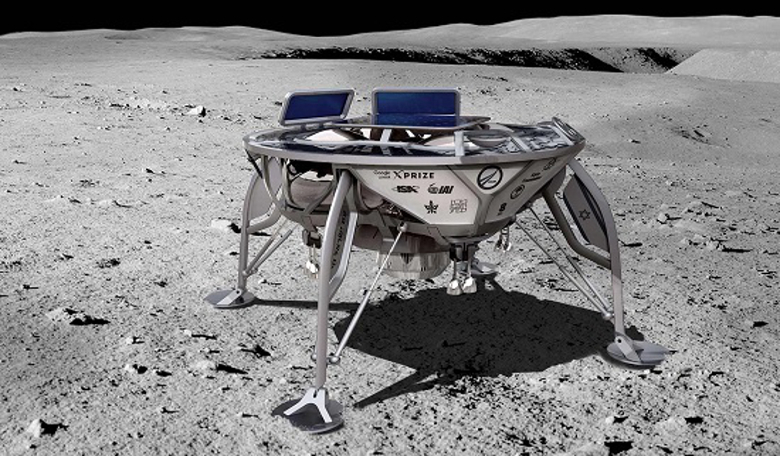Very soon, if all goes according to plan and the SpaceX Falcon 9 rocket it is hitching a ride with blasts off successfully, then an Israeli company will be the first private non-profit organisation to land a spacecraft on the Moon.
SpaceIL, which was founded by three young engineers, was established in order to participate in the Google Lunar X Prize race. However after non of the entrants were successful in sending a craft to the Moon, the company ploughed on with its own plans to carry on the work it started.
The result was a rover called Beresheet and once firmly ensconced on the Moon, the craft will propel itself over the lunar surface by "hopping" on its rocket engine to a second landing spot. Beresheet, which means ‘in the beginning’, or ‘at the start’ in hebrew, is destined to first land within Mare Serenitatis on the northern hemisphere of the Moon; a region known for magnetic anomalies and a phenomena that the rover intends to study with its magnetometer.
The data collected by the magnetometer will be shared with NASA as part of an agreement that was signed between the space agency and the builders of the craft, Israel Space Agency (ISA) last year. As part of the deal NASA contributed a laser retroreflector array to aid with ground tracking and Deep Space Network support to aid in mission communication. Once obtained, the data will be made publicly available through NASA’s Planetary Data System.
Beresheet also packs on board a time capsule that it plans to leave on the Moon indefinitely. The capsule consists of three discs, two of which belong to SpaceIL. These contain hundreds of digital files such as details about the spacecraft and the crew who built it; national symbols, the Bible, Israel’s national anthem, “Hatikvah”, the Israeli flag and cultural objects that have been collected over many years from the public.
The third disk is a special nickel disc designed to endure the conditions of space for at least a billion years and it represents a tribute to the knowledge accumulated by all humanity so far. It has been supplied by the Arch Mission Foundation's Lunar Library, the first ever Lunar archive that contains 25 layers of scientific, cultural and historical information, including dictionaries in nearly 30 languages and a range of encyclopaedias such as Wikipedia.
“This is another step on our way to the moon,” said Ido Anteby, CEO of SpaceIL. “Inserting the disks into the spacecraft, which is a real “time capsule,” indicates the spacecraft’s readiness to blast off from the launch site in a few weeks. SpaceIL’s crews and IAI have completed testing of the spacecraft and its systems, and are preparing for the beginning of the amazing and complex journey that exemplifies innovation, creativity and courage. The spacecraft’s historic journey, which also includes a scientific mission, makes a significant contribution to advancing the space industry and the subject of space in Israel.”
Israels’ first Moon lander has already made its way to Florida where it will launch from the Cape Canaveral site in mid-February. After blast off, the spacecraft will orbit Earth three times before entering the Moon’s orbit. The spacecraft will than wait for an optimal timing before the landing manoeuvre is initiated. All in all, it should take about two and a half months once the spacecraft has left our planet.
Israel Aerospace Industries (IAI) who has partnered up with SpaceIL will be keeping a careful watch on the unfolding journey of Beresheet from its mission control headquarters located in the firm’s space facility in Yehudi, Israel. Watching from closer in to the action will be NASA’s Lunar Reconnaissance Orbiter, which will attempt to take scientific measurements of the SpaceIL lander as it lands on the Moon.
Opher Doron, IAI’s Space Division General Manager, said: “We are proud to be the first non-governmental entity in the world to go to the moon. Landing on the moon was for many years a little-discussed topic among the public, but recently we see growing interest as world superpowers seek to return to the moon in a variety of commercial missions. There is no doubt that the technological knowledge acquired by IAI during the development and construction of Beresheet, together with Space IL and combined with the space capabilities developed over more than 30 years at IAI, puts us at the global forefront in the ability to complete lunar missions.”











